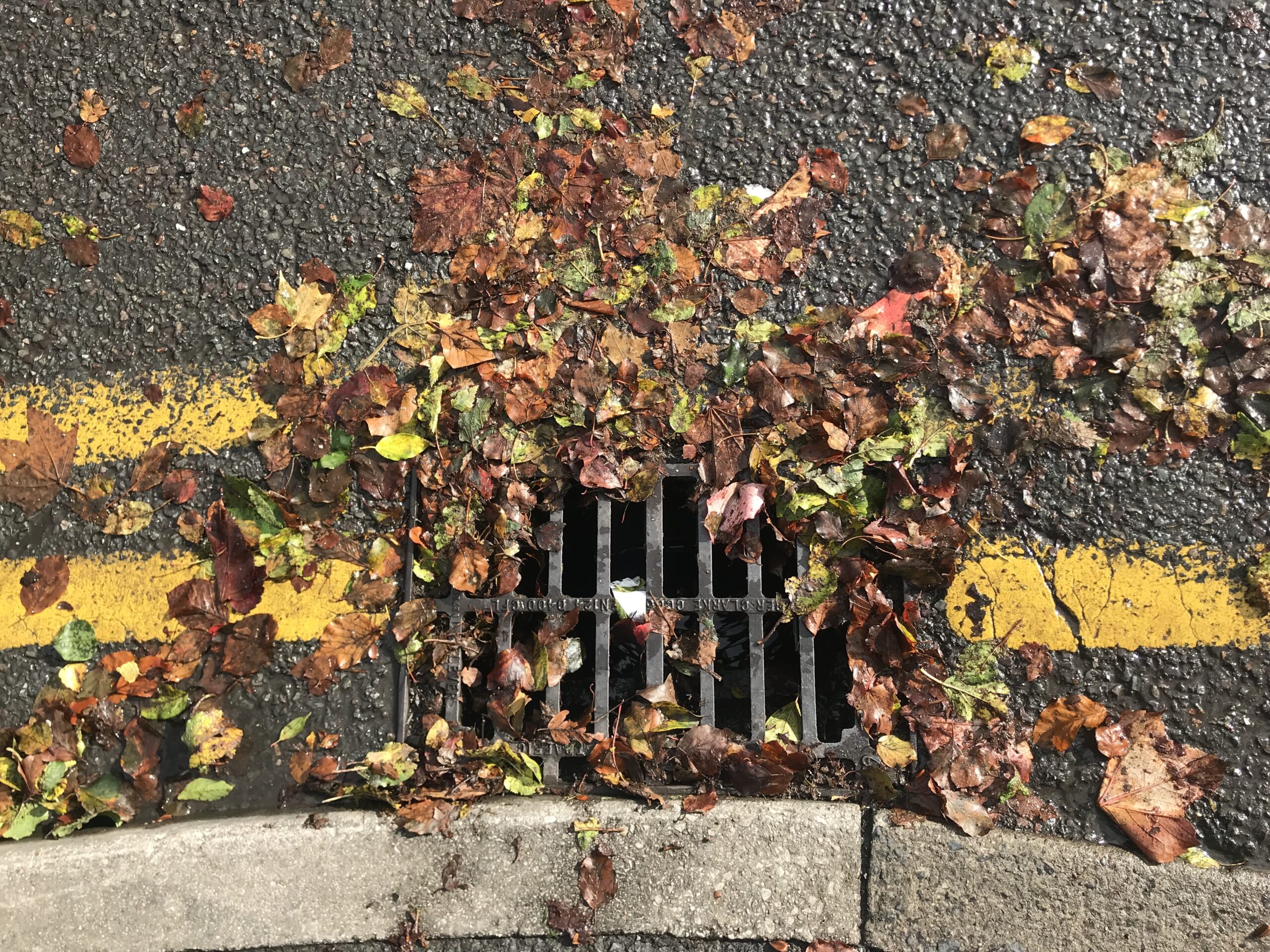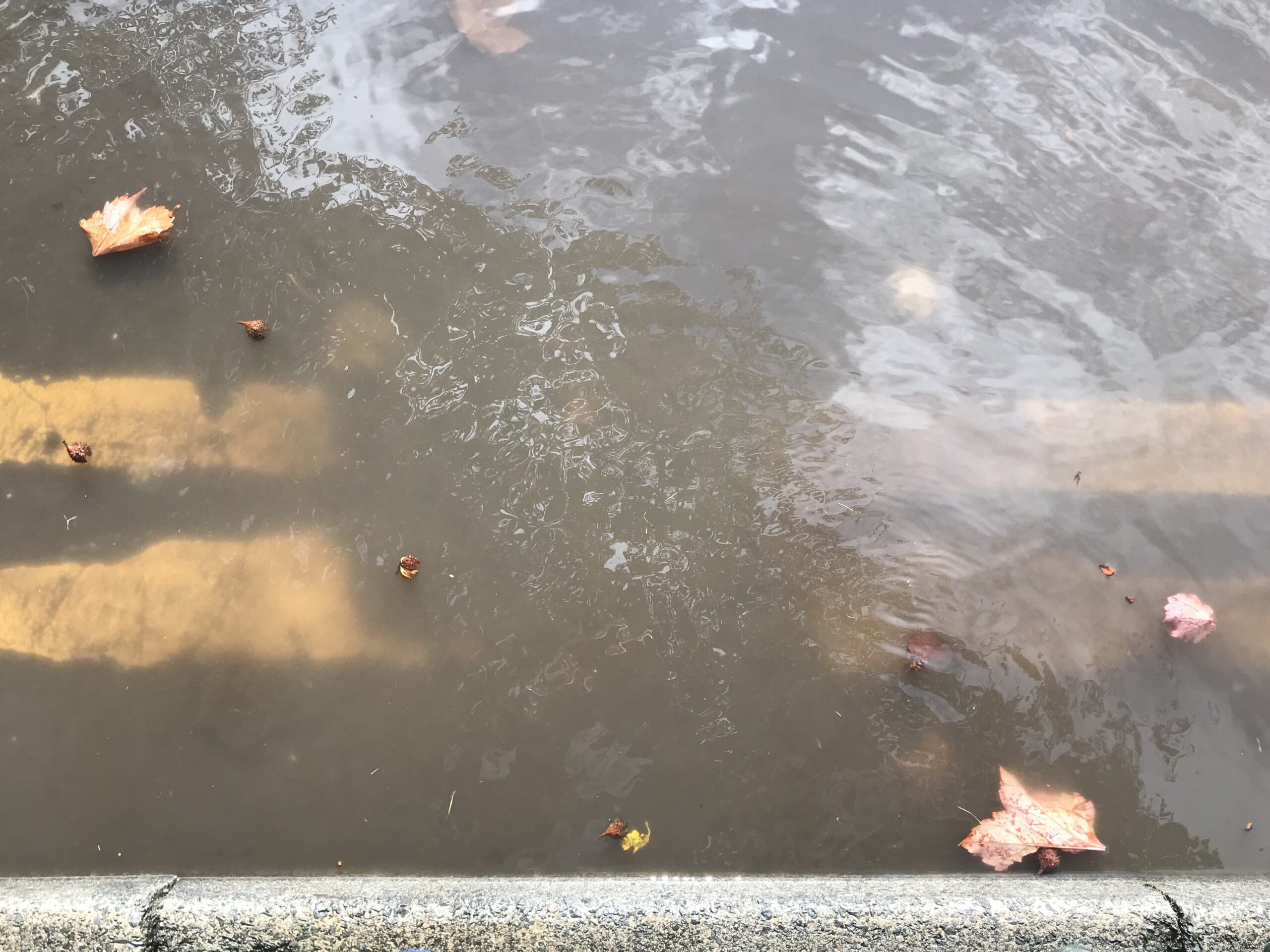This blog has been written by The Flood Hub People.
Did you know during an hour’s storm, enough rain may fall on a driveway to fill three bathtubs?
If you’ve experienced flooding before, the arrival of autumn can feel like the start of a more worrying time of year. With heavier rain and more frequent storms, the risk of surface water flooding increases, especially when drains start getting clogged with fallen leaves.
At the same time, more green spaces and gardens are being replaced with hard surfaces like paving and driveways, something known as urban creep. This means there’s less permeable ground for rain to soak into, which puts even more pressure on our drainage systems to keep up.
What are highway gullies and why are they important?
Highway gullies, those metal grates you see by the side of the road, are a vital part of the surface water drainage system. Their job is to collect rainwater and stop it from pooling on roads and pavements. But at this time of year, they’re incredibly vulnerable to blockages, especially from fallen leaves.
Even just a thin layer of soggy leaves across a gully can prevent water from entering the system below. That means more standing water on roads and a greater risk of surface water flooding, particularly during intense downpours.
Who’s responsible for clearing gullies?
Technically, it’s the responsibility of your local highways authority to clear blocked gullies. But with many councils facing funding cuts, there are fewer gully wagons on the road, and less time to cover the hundreds of thousands of gullies across a county.
Even when a blocked gully has been cleared, it can be covered up again in a matter of hours. So, what can we do about it?

How you can help manage flood risk in your area
We’re not suggesting you start lifting gully covers or taking on a full-time cleaning job, far from it. But there are a few easy things you can do that make a big difference:
You can also use this link to report a blocked drain directly: www.gov.uk/report-blocked-drain
Don’t forget about your own drains and gutters
It’s not just public gullies that matter. Your own drains, gutters and downpipes can also become blocked with autumn debris, and if they overflow, it can lead to water damage or contribute to localised flooding.
Here are a few quick home maintenance tips:
If you share a drain with your neighbours and it’s blocked further along the pipe, it’s likely your local water company is responsible. In the North West, this would be United Utilities, and you can call them on 0345 672 3723 for advice or to report a problem.

Help your community manage flood risk this autumn
A little bit of awareness and a few small actions can make a big difference in managing flood risk. If we all keep an eye out for blocked gullies and take care of our own drains, we can help water flow where it needs to, instead of ending up where it shouldn’t.
And if you want to learn more about flood preparation, home flood plans, alternative sandbags and flood insurance, check out The Flood Hub: www.thefloodhub.co.uk
Click here to download out ‘Autumn Leaves, Blocked Drains and Flooding’ Resource.